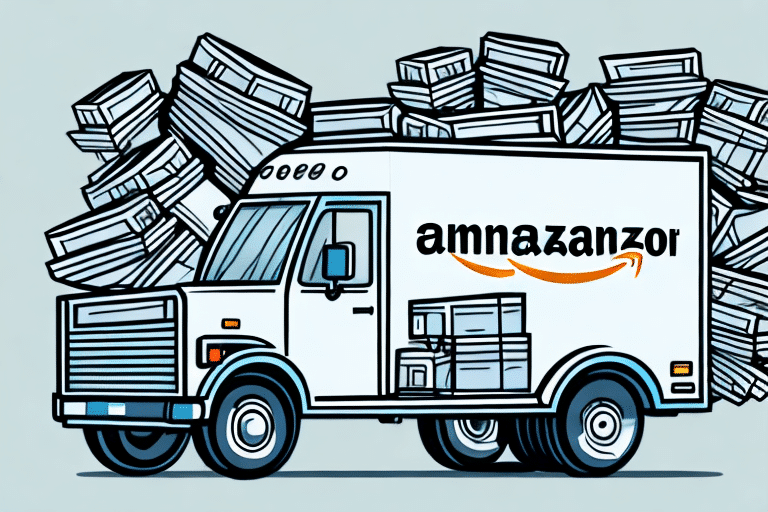Amazon Prime Day 2023: Preparing for the Peak Parcel Season
The ecommerce industry has undergone a massive transformation in recent years, driven by the rapid digitalization of our world. The number of online shoppers continues to grow, and ecommerce companies have had to keep up with demand by developing sophisticated logistics and supply chain management systems. One of the most significant challenges that ecommerce companies like Amazon face is the peak season for parcel deliveries, which can put a great deal of strain on their resources. It is during these times that a data-driven strategy becomes critical, and in this article, we will explore why this is the case.
Understanding Amazon Prime Day 2023
Amazon Prime Day is one of the biggest shopping events of the year, where customers can expect to find great deals on a wide range of products. In 2023, Amazon Prime Day is projected to surpass previous years in terms of sales and participation, presenting a significant logistical challenge for Amazon, particularly in delivering parcels on time.
With the increasing popularity of online shopping, Amazon has been facing a surge in demand for its delivery services. To cope with the high volume of orders during Prime Day, Amazon has invested heavily in its logistics infrastructure, including expanding its network of warehouses and hiring more delivery drivers. Additionally, Amazon has been exploring new technologies such as drones and autonomous vehicles to improve its delivery efficiency and speed.
Impact of Parcel Peak Season on Amazon’s Operations
Defining Parcel Peak Season
Parcel peak season refers to periods when the demand for deliveries is at its highest. For Amazon, this typically occurs during the holiday season and major sales events like Prime Day. During these times, the company must handle an enormous number of orders, which can put significant strain on their logistics and supply chain management systems.
Operational Challenges
Even with vast resources and sophisticated processes, Amazon can become overwhelmed by the sheer volume of orders during peak seasons. To manage this, Amazon often hires additional staff and increases its fleet of delivery vehicles. The company also implements various strategies to optimize its supply chain, such as using predictive analytics to forecast demand and adjusting inventory levels accordingly. Despite these efforts, delays in delivery times and stock shortages can still occur, leading to customer dissatisfaction and lost sales.
The Critical Role of Data-Driven Strategies
Optimizing Resources with Data Analytics
A data-driven strategy is essential for Amazon to handle peak seasons effectively. By analyzing data from previous peak seasons, Amazon can identify areas of weakness and opportunities for improvement. This allows the company to optimize its resources, ensuring it can handle peak seasons more efficiently. For instance, predictive analytics can forecast high-demand products, enabling Amazon to adjust inventory levels proactively.
Enhancing Customer Experience
Data analysis also plays a crucial role in improving the customer experience. By understanding customer behavior and preferences, Amazon can tailor its services to meet expectations better. This includes providing accurate delivery estimates, optimizing delivery routes, and personalizing communication with customers regarding their orders.
Innovations in Amazon’s Logistics and Supply Chain
Automation and Robotics
Amazon has invested heavily in automation and robotics to enhance its logistics capabilities. The use of robots in fulfillment centers increases efficiency and reduces the likelihood of human error, ensuring faster and more accurate order processing.
Advanced Forecasting Techniques
Utilizing machine learning algorithms, Amazon can predict demand with greater accuracy. This allows for better inventory placement and reduces the risk of stockouts or overstocking, both of which can be costly during peak seasons.
Sustainable Practices
Amazon is also focusing on sustainability within its supply chain. Initiatives such as using electric delivery vehicles and optimizing packaging materials help reduce the company’s carbon footprint, aligning with consumer expectations for environmentally responsible practices.
Collaborating with Parcel Carriers
Managing Increased Demand
Amazon Prime Day not only impacts Amazon but also its parcel carriers like UPS and FedEx. These carriers experience a surge in package volume, requiring them to allocate additional resources to handle the increased demand. This collaboration is crucial to maintaining delivery timelines and ensuring customer satisfaction across the board.
Technology Integration
Integrating advanced tracking systems and real-time data exchange between Amazon and its carriers enhances coordination. This ensures that packages are routed efficiently, reducing the likelihood of delays and improving overall delivery performance.
Strategies for Mitigating Peak Season Strain
Scalable Workforce Management
To address the surge in demand, Amazon employs a scalable workforce strategy. This includes hiring temporary staff during peak periods and providing thorough training to ensure that new employees can quickly adapt to the high-pressure environment.
Enhanced Forecasting Models
Improving forecasting models by incorporating more variables and real-time data helps Amazon anticipate demand spikes more accurately. This enables better planning and resource allocation, minimizing the risk of bottlenecks in the supply chain.
Investment in Technology
Continuous investment in technology, such as AI-driven logistics platforms, allows Amazon to streamline operations. Automated systems can handle routine tasks, freeing up human resources to focus on more complex challenges during peak seasons.
Future Trends and Implications for the Ecommerce Industry
The implications of parcel peak season strain extend beyond Amazon, impacting the entire ecommerce ecosystem. As consumer demand for online shopping continues to rise, other ecommerce players must also adopt data-driven strategies to remain competitive. Investments in logistics infrastructure, automation, and sustainable practices will become increasingly important for all companies aiming to meet rising customer expectations.
Moreover, advancements in AI and machine learning will play a pivotal role in shaping the future of ecommerce logistics. These technologies will enable more accurate demand forecasting, efficient resource allocation, and enhanced customer experiences, ensuring that companies can thrive even during the busiest times of the year.
In conclusion, Amazon Prime Day 2023 underscores the critical need for data-driven strategies in managing parcel peak seasons. By leveraging data analytics, investing in technology, and optimizing logistics operations, Amazon can navigate the challenges of peak demand and continue to deliver exceptional service to its customers.






















